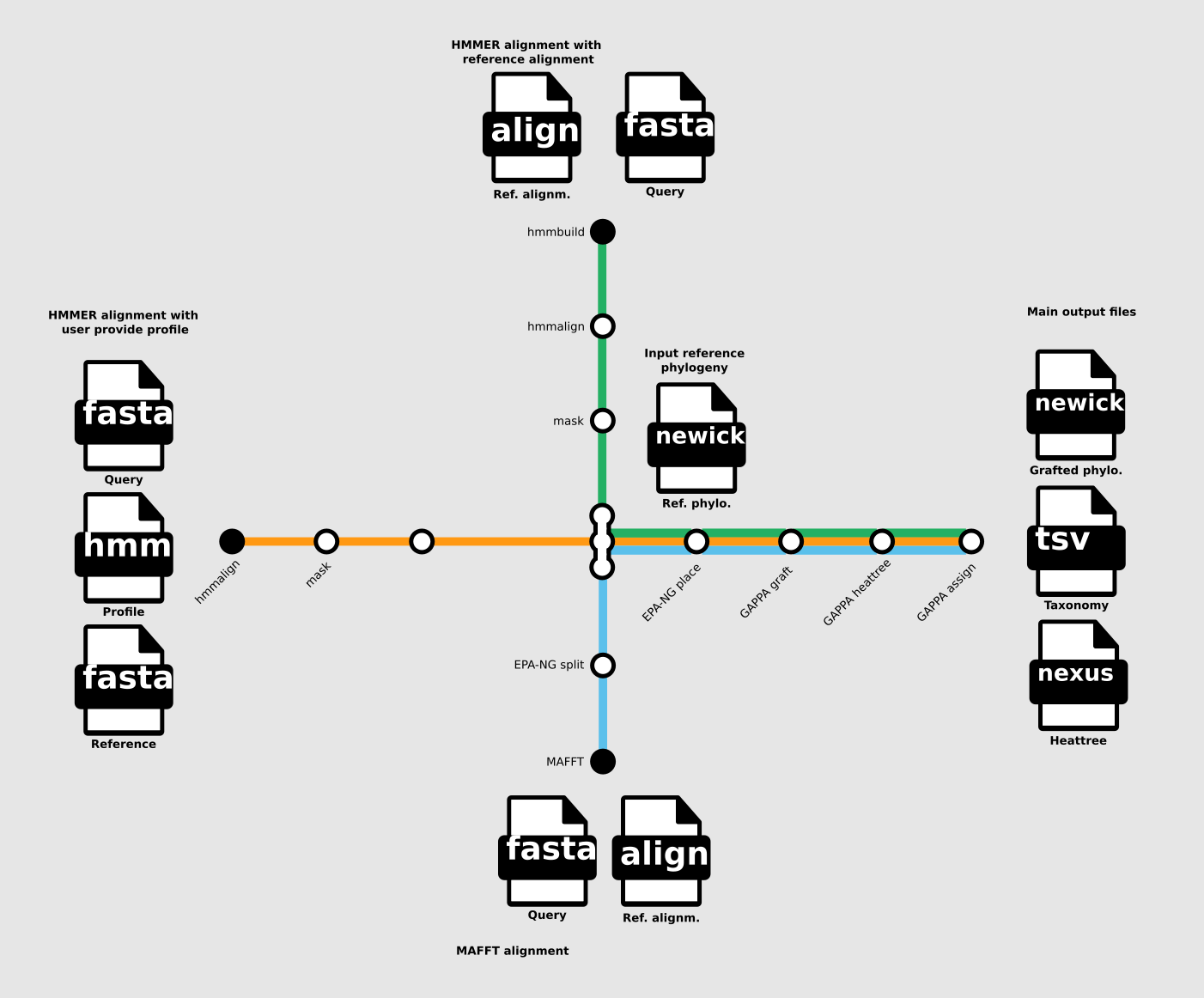nf-core/phyloplace
nf-core/phyloplace is a bioinformatics best-practice analysis pipeline that performs phylogenetic placement with EPA-NG.
Introduction
nf-core/phyloplace is a bioinformatics best-practice analysis pipeline that performs phylogenetic placement with EPA-NG.
The pipeline is built using Nextflow, a workflow tool to run tasks across multiple compute infrastructures in a very portable manner. It uses Docker/Singularity containers making installation trivial and results highly reproducible. The Nextflow DSL2 implementation of this pipeline uses one container per process which makes it much easier to maintain and update software dependencies. Where possible, these processes have been submitted to and installed from nf-core/modules in order to make them available to all nf-core pipelines, and to everyone within the Nextflow community!
On release, automated continuous integration tests run the pipeline on a full-sized dataset on the AWS cloud infrastructure. This ensures that the pipeline runs on AWS, has sensible resource allocation defaults set to run on real-world datasets, and permits the persistent storage of results to benchmark between pipeline releases and other analysis sources.The results obtained from the full-sized test can be viewed on the nf-core website.
Pipeline summary
- Optionally: Search a fasta file with a set of
HMMERprofiles. Best hits for each profile will be passed to the steps below. - Align query sequences to the reference alignment using either
HMMER,clustaloorMAFFT. - Place query sequences in reference phylogeny with
EPA-NG. - Graft query sequences onto the reference phylogeny with
GAPPA. - If provided with a classification of the reference sequences, classify query sequences with
GAPPA.

Usage
If you are new to Nextflow and nf-core, please refer to this page on how to set-up Nextflow. Make sure to test your setup with -profile test before running the workflow on actual data.
Now, you can run the pipeline using:
nextflow run nf-core/phyloplace \
-profile <docker/singularity/.../institute> \
--phyloplace_input samplesheet.csv \
--outdir <OUTDIR>Or:
nextflow run nf-core/phyloplace \
-profile <docker/singularity/.../institute> \
--phylosearch_input search_params.csv \
--search_fasta sequences.faa \
--outdir <OUTDIR>Please provide pipeline parameters via the CLI or Nextflow -params-file option. Custom config files including those provided by the -c Nextflow option can be used to provide any configuration except for parameters; see docs.
For more details and further functionality, please refer to the usage documentation and the parameter documentation.
Pipeline output
To see the results of an example test run with a full size dataset refer to the results tab on the nf-core website pipeline page. For more details about the output files and reports, please refer to the output documentation.
Credits
nf-core/phyloplace was originally written by Daniel Lundin.
We thank the following people for their extensive assistance in the development of this pipeline:
Contributions and Support
If you would like to contribute to this pipeline, please see the contributing guidelines.
For further information or help, don’t hesitate to get in touch on the Slack #phyloplace channel (you can join with this invite).
Citations
If you use nf-core/phyloplace for your analysis, please cite it using the following doi: 10.5281/zenodo.7643941
An extensive list of references for the tools used by the pipeline can be found in the CITATIONS.md file.
You can cite the nf-core publication as follows:
The nf-core framework for community-curated bioinformatics pipelines.
Philip Ewels, Alexander Peltzer, Sven Fillinger, Harshil Patel, Johannes Alneberg, Andreas Wilm, Maxime Ulysse Garcia, Paolo Di Tommaso & Sven Nahnsen.
Nat Biotechnol. 2020 Feb 13. doi: 10.1038/s41587-020-0439-x.